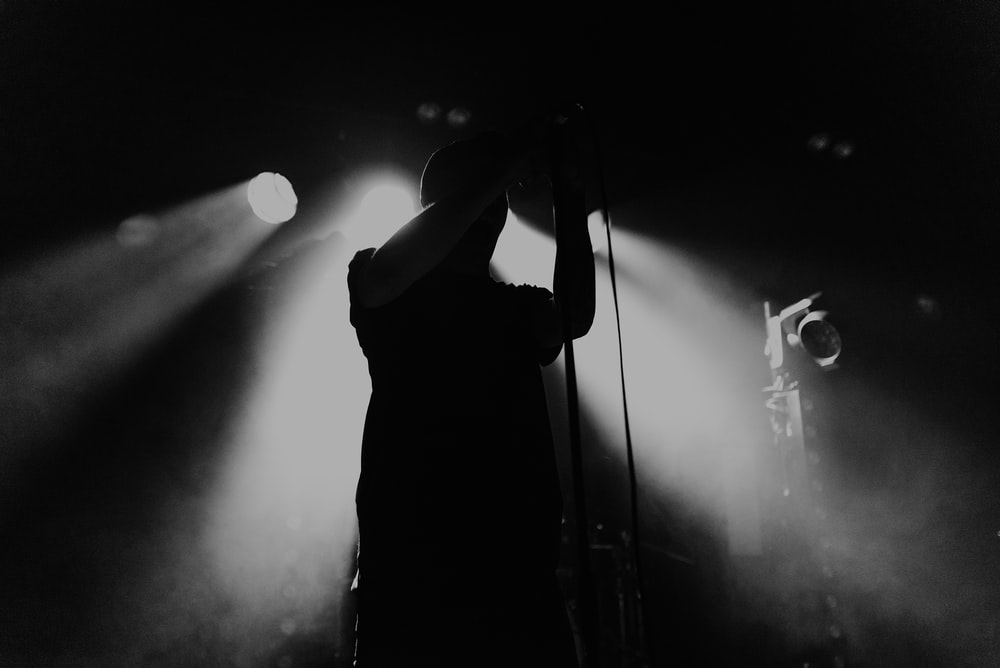As human beings we are, by nature, social creatures. We are hardwired to crave social interaction with each other and our voices serve as our key instrument allowing us to accomplish this basic human need. When we’re lonely or sad, we try to find someone to talk to. When we need something, we ask others for help. When we’re excited, we express our joy. Although these examples may only pertain to simple speech, as humans we possess another means of social interaction through the utilization of our voices in singing.
Whereas speech can primarily be seen as a means of conveying information, singing serves as an expressive form of communication through the channels of performance and music. Through these channels, singing succeeds at something much more effectively than the traditional means of communication; and that is, the conveyance of emotions. Although a person can certainly just resort to telling others about how they feel, expression through song seems to possess the innate ability to demonstrate our genuine, raw emotions in addition to stating it. By choosing to sing rather than speak, the same bland words that we use to inform others of how we feel suddenly gain color. Within these new hues, our words begin to carry more weight as they take on new meaning. Rather than simply saying that we are sad, we allow ourselves to relate to the words, come to feel the emotions that accompany them, and put those emotions on display for others through our singing.
When looking at the act of singing through this perspective, it becomes apparent that the beauty of singing comes from this vulnerability and intimate state we allow ourselves to reach. By allowing ourselves to open up in this manner, I believe we put ourselves in the greatest position conducive to genuine human interaction and connection. Rather than approaching others with the hesitancy and judgment we may be accustomed to, this intimate mindset provides us with the opportunity to see each other for who we are. When both listener and singer enter this state of being together, a sense of trust is seemingly laid as a foundation due to the courage and initiative it takes for both people. When it comes to singing with others, this foundation of trust is seemingly amplified; as it takes a vast amount of courage for both singers to reveal that intimate state to one another.
Coming into this course, this concept I had of music and its relationship with social connection was something I only hypothesized about. However, throughout this course and the handful of events we were able to attend with the community partners, I was able to observe and test whether or not music truly did play a role in developing connections with others.
Throughout the entirety of this course, the concept of music being a social activity was frequently emphasized. Although there were various assigned readings that spoke about this concept and enforced it within the early weeks of the quarter, I believe that the idea only began to truly resonate with me after watching the Mr. Rogers documentary. With music requiring both a listener and performer, I had always innately known that music was a social activity. However, the way I understood it before was seemingly limited. As a musician myself, I had always observed it from the perspective of the performer and never really considered it through the listener’s point of view before. In my mind, music was a piece of art that I used as a channel for my own expression through performance. I simply played the music that I was assigned and never considered how it affected and connected with the audience internally. I only considered how music made ME feel.
However, this mindset quickly changed after watching the Mr. Rogers documentary. With the episode featuring his friend, Jeff Erlanger, who had a rare form of disease, Mr. Rogers singing his iconic song “It’s You I Like” as a duet with Jeff felt more like a precious moment of connection and consoling, rather than a traditional performance. With both people looking closely into each other’s eyes as they sang, the words that were already sweet on their own began to feel like Mr. Rogers’ own personal token of appreciation for the bravery that his friend has displayed by continuing to fight through his disease. Within this moment, music seemingly transformed those iconic lyrics into a beautifully written letter of admiration for Mr. Rogers’ dear friend. This may only be my own personal interpretation of the performance but, in my eyes, Mr. Rogers sang this song as a duet with Jeff with the sole intention of connecting with him and communicating that he admires and respects Jeff for his bravery. In this instance, I felt as if I finally began to understand the concept of music as a true social activity.
This shift in mindset was only enforced more when watching the session with our community partner, Songs by Heart, which was led by Katie Hickey. This community partner’s main focus was to utilize singing and music as a form of therapy for the aging nursing home residents who may have been struggling with the gradual declining mental capabilities that come with illness or old age. With Katie’s motivation in mind, I went into this session fully expecting Katie to initiate all of the social interaction with the nursing home residents throughout the performance. Although this was generally true, in that Katie sang her songs and initiated physical interaction with the audience members by inviting them to hold her hand and dance with her, there were several instances throughout the performance where the nursing home residents ultimately took the lead after accepting Katie’s invitation and began adding their own small gestures and moves to the subtle dancing. Additionally, although only a handful of residents started the concert singing out loud with Katie, as the concert progressed, a vast majority of audience members eventually joined in. Although I can’t say this with absolute certainty, through these observations, I believe that this displays yet another instance in which both the listener and the performer have come to genuinely connect with each other through the medium of music and singing. Through Katie’s willingness to be vulnerable and sing for the audience by herself to start the concert, I believe that it heavily motivated the residents to eventually come to trust her and begin singing with her themselves. Additionally, with her choosing to sing popular nursery rhymes and songs for her repertoire, I believe it added another avenue for her to possibly come to relate and connect with her audience. With this being said, I fully believe that this entire experience truly went on to demonstrate the power of music and singing as a catalyst for social connection.
Lastly, when observing the rehearsal of the Voices of Our City Choir, I found myself being fully convinced of music and singing as a social activity. Throughout the rehearsal, I remember taking note of how happy and genuinely supportive each of the choir members were of each other. Whenever a member wanted to try out a solo for one of the songs in their repertoire, they were met with a huge outcry of support from their fellow members. Despite this choir consisting of mostly “unsheltered people” who were struggling through life, as an observer I couldn’t see any trace of that as they sang together. With this in mind, during the Q&A session we had with the director a couple days later, I remember one of her choir members telling us how the choir became a safe haven for her. Being unsheltered, she candidly expressed how painful it was for her to be out on the streets everyday with people choosing to “not see” her due to her economic status. With that said, I vividly remember her telling us how the choir was the first place where she finally felt like she was being “seen”. After hearing this, it became extremely apparent to me why the choir seemed to be so tight knit despite their circumstances. In my personal opinion, I believe that because these individuals have all experienced similar circumstances and already can sympathize with each other, the utilization of music and singing as their medium allows for these members to truly come to trust each other and develop genuine connection through their shared experiences.
Ultimately, throughout the duration of this quarter, I believe that I’ve come to fully embrace this concept of music and singing as catalysts for social connection. Through the experiences I’ve had within this course, my past perception and opinions on music have slowly but gradually shifted. Moving forward, I believe that this newfound understanding and approach to musicking will continue to remain with me as I approach my future endeavors as a musician.
With all of that said, I sincerely thank Prof. Sussman for being an incredible guide for myself and the class throughout this musical journey.

